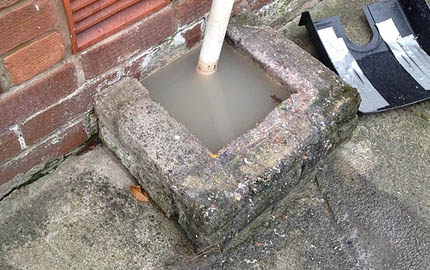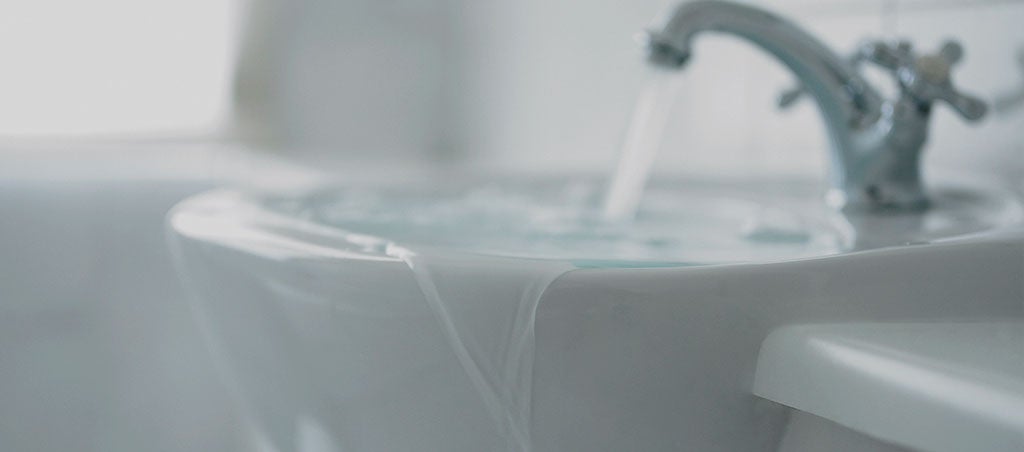How to Unclog a Blocked Drain Before Seeking Plumbing Experts
How to Unclog a Blocked Drain Before Seeking Plumbing Experts
Blog Article
Listed here on the next paragraphs you'll find a bunch of brilliant expertise involving How to handle a clogged drain in your home.

Introduction
Handling an obstructed drain can be a frustrating experience, interrupting day-to-day tasks and potentially causing damages to your building. Nonetheless, before connecting to pipes specialists, there are steps you can take to resolve the issue yourself. In this overview, we'll discover do it yourself solutions and safety nets to tackle an obstructed drain efficiently.
Identifying the Issue
The first step in resolving a blocked drainpipe is identifying the signs. Sluggish water drainage, gurgling sounds, foul odors originating from drains pipes, or water support up are common signs of a blocked drain. Identifying these indicators early can aid stop better complications.
Selecting the Right Plumbing Solution
When choosing a pipes service, think about elements such as experience, licensing, and client testimonials. Choose a trustworthy plumbing professional with a performance history of quality handiwork and clear rates methods.
Expense Factors to consider
The expense of expert drainpipe cleaning services can vary depending on the severity of the obstruction and the plumbing technician's rates. Demand quotes from multiple companies and ask about any additional charges to make certain openness and avoid shocks.
Safety Measures
When attempting DIY drain cleansing, prioritize safety and security. Use safety handwear covers and eyewear to avoid contact with unsafe chemicals or bacteria. Never blend various drain cleansing items, as this can generate dangerous fumes.
Instance Researches
Real-life instances show the effectiveness of do it yourself options and the importance of prompt specialist intervention in dealing with drain obstructions.
Usual Causes of Obstructed Drainpipes
Recognizing the elements that contribute to drain blockages is vital for effective resolution. Typical wrongdoers include hair, soap scum, grease, food debris, and international objects like sanitary products or paper towels. Tree origins getting into underground pipes can likewise trigger considerable clogs.
Do it yourself Solutions
For small clogs, several do it yourself solutions can be effective. Pouring boiling water down the drain can aid dissolve oil and debris. Baking soda and vinegar or a mixture of salt and baking soft drink can work as natural cleaners. Utilizing a plunger or plumbing snake to displace obstructions is one more alternative.
Devices and Equipment
Having the right devices on hand can make do it yourself drainpipe cleansing much more efficient. A bettor is a functional device for removing clogs in sinks, toilets, and showers. A plumbing snake or auger can reach much deeper obstructions, while drain cleansing chemicals can be utilized carefully for persistent blockages.
Preventive Measures
To avoid future clogs, adopting safety nets is vital. Install drain guards or filters to catch hair and debris prior to they enter the pipelines. Consistently flush drains pipes with hot water to dissolve oil buildup, and avoid taking care of grease or solid waste down the drain.
When to Call a Specialist
While do it yourself solutions can solve small clogs, certain indications indicate the demand for specialist help. Relentless blockages, foul odors in spite of cleaning up initiatives, or several drains backing up concurrently are warnings that warrant experienced intervention.
Conclusion
By adhering to the ideas laid out in this overview, you can successfully deal with blocked drains and avoid future pipes problems. Whether going with do it yourself services or looking for professional aid, timely action is vital to maintaining a healthy plumbing system and preserving the integrity of your home.
How to Clear a Clogged Drain Yourself (And When to Call In the Professionals)
What Can Clog a Drain
Dirt Skin flakes Hair Grease Soap scum Food Offset pipes Tree roots Small objects Mineral buildup DIY Tricks to Unclog a Drain
You can fix this! Once you have identified the source of the clog (or have a vague idea), you can try one or a combination of these fixes in order to clear your plumbing.
Wire Hanger or Snake
Untangle and clear out hair from a drainpipe with a homemade snake. Use a straightened-out wire hanger with a 90-degree angle hook to locate the clog and drag out any unwanted material.
Remember not to push the clog further down to where the wire hanger cannot reach! If you need to follow up with a plunger, give it a try. Your efforts might be more successful after it’s been wire-snaked.
If you want to get fancy and don’t have a wire hanger to spare, head to the store and pick up a hand-operated drain snake. You can get one for $10-$30. It may save you the hassle, and provide additional length to reach deep into the clogged pipe.
Plunger
A cup plunger has a suction cup attached to a wooden handle. The rubber creates a seal around the drain, and increases the pressure force of the plunger.
Plunge for 30-second increments to loosen the clog. This may need to be repeated over the course of 15-20 minutes. Once plunged, run the water to flush the remaining material out of the drain.
Remember– never use a plunger if you have used a chemical drain cleaner. These chemicals can splash up from the force of the plunger and cause serious injury or burns.
Boiling Water
Hot water can sometimes break up materials into a flushable amount. Dirt, grease, and soap buildup requires heat in order to unstick from surfaces.
Take your kitchen kettle and heat your water to a boil. Once it reaches a rolling boil, pour it directly down the drain into the blockage. Carefully follow with plunging, if necessary.
Don’t worry if this takes more than one try! It can often take multiple kettles and repeated plunging in order to clear a particularly stubborn clog.
Chemical Drain Cleaner
As a last resort, pick up a bottle of chemical drain cleaner. Drain-cleaning chemicals are potent, and not very good for the environment.
You may need to wear protective eyewear in gloves before handling your bottle of chemical drain cleaner. Follow the instructions printed on the bottle, and flush with water as soon as the instructions allow. Do not follow with plunging.
Baking Soda and Vinegar
As a safer alternative to chemical drain cleaner, baking soda and vinegar can create a chemical reaction that clears tough clogs.
Combine one cup of cleaning vinegar with one cup of boiling water, and set aside. Once you have done this, pour half a cup of baking soda down the drain. Give the baking thirty seconds to settle and cover a large portion of the problem drain.
Following the baking soda, pour down your vinegar and hot water solution. Once the vinegar and baking soda combine, the mixture will bubble and fix. Let this reaction fizzle in the drain for about an hour.
After an hour, follow with a kettle’s worth of hot water. The heat and liquid should flush out any remaining material.
When to Call a Plumber
If your DIY attempts haven’t cleared your clog drain, it’s time to call in a professional. It’s not worth losing access to your kitchen sink or high-traffic bathroom. A clog in a vital area can keep you from the things you’d rather be doing, and derail your routine.
Anytime a clog is causing water to spread is a time to call in a plumbing service. What starts out as a little bit of water can quickly grow into serious, expensive water damage.
Additionally, a serious clog can result in burst pipes or serious leaks. Make sure you know when to take it seriously!
https://myguysnow.com/how-to-clear-a-clogged-drain-yourself-and-when-to-call-in-the-professionals/

Do you appreciate more info about 8 Tips For Clearing A Blocked Drain? Leave a short review down the page. We will be glad to hear your opinion about this write-up. Hoping that you come back again before long. Sharing is caring. One never knows, you may very well be helping someone out. Many thanks for being here. Kindly check our blog back soon.
Call Today Report this page